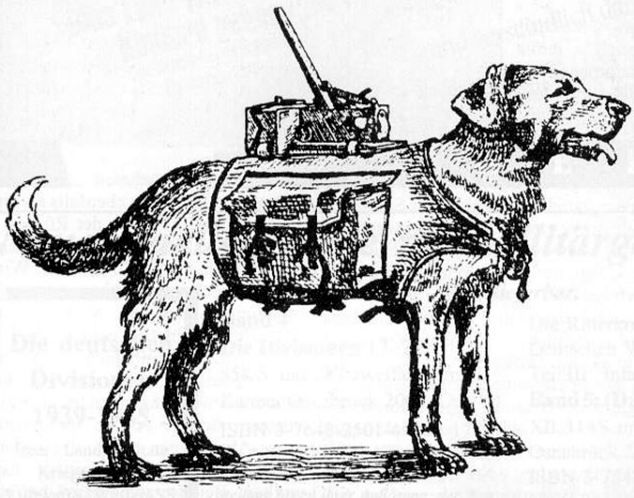The Great Patriotic War - as the Russians call the Second World War - saw huge Soviet sacrifice and loss, including their pets.
As early as the autumn of 1941, during the defense of Moscow, the Russian army began to deploy a very special kamikaze weapon - way before the Japanese had the idea. But these were not young Soviet men strapping themselves in to fighter jets willing to give their lives to Mother Russia.
These kamikazes were dogs. Hungry Russian dogs.
According to US reports, the Russians were training dogs to run under tanks by hiding food in their tracks. In battle conditions the plan was for these dogs (which were kept hungry) would be fitted with a canvas doggie-jacket packed full oh high explosives. The igniter would be triggered by a long spring-loaded spindle standing upright. When the animal crawled under the belly of a tank the spindle would be depressed, the igniter would fire and the charge detonated, blowing the tank (and the dog) to bits.
Happily for the dogs, the system proved unreliable in full war conditions, although not surprisingly German and Russian reports of the relative success of these kamikaze canines differed considerably.
German sources suggest the dogs were completely ineffective against motorised armour and were too scared to approach vehicles closely enough to do damage. There are reports of scared dogs returning back to Russian lines, forcing their handlers to shoot them before they got too close. In the end, German reports proclaim they didn't lose one single tank to these doggie destroyers.
The Soviets, on the other hand, beg to differ. They say that during the Battle of Kursk in 1943 sixteen dogs were successfully deployed and they destroyed 12 tanks between them.
Regardless of the success or not of this initiative. One thing can be certain - the eastern battlefields were deadly for dogs as once news got our that the Soviets were trying this tactic, German soldiers tended to follow a 'shoot on sight' policy for all canines in their immediate vicinity. Better to be safe than sorry.


Comments